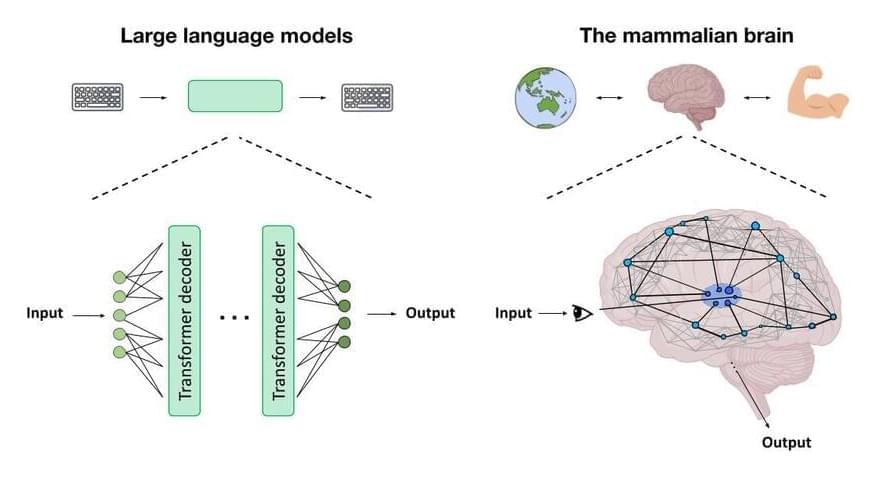Some big treats are en route for Plus subscribers.



We live in an age of exoplanet discovery. One thing we’ve learned is not to be surprised by the kinds of exoplanets we keep discovering. We’ve discovered planets where it might rain glass or even iron, planets that are the rocky core remnants of gas giants stripped of their atmospheres, and drifting rogue planets untethered to any star.
Now, astronomers have uncovered evidence of an exoplanet in a circumbinary disk around a binary star. The remarkable thing about this discovery is that the disk is in a polar configuration. That means the exoplanet moves around its binary star in a circumpolar orbit, and this is the first one scientists have found.
AC Herculis (AC Her) is a binary star about 4,200 light-years away. The primary star is well-studied, while its partner is invisible. It has a polar circumbinary disk, which is unusual but not unheard of. In a new paper, a team of researchers presents evidence for the polar circumbinary exoplanet.

About 400 earthquakes have rumbled under Mount St. Helens since mid-July, the largest chain of shakes since the volcano finished erupting in 2008, the U.S. Geological Survey reported last week.
Small magnitude earthquakes, detected only by sensitive equipment, signal a volcano’s “recharging” as magma flows through chambers and cracks deep under the ground, said Wes Thelen, U.S. Geological Survey Cascades Volcano Observatory geophysicist and seismologist.
Between late August and early September, scientists observed 40 to 50 earthquakes per week located between 2.5 to 5 miles below the crater floor, before recently dwindling to 30. To compare, Mount St. Helens averaged roughly 11 quakes per month since 2008.

Machine learning (ML) is now mission critical in every industry. Business leaders are urging their technical teams to accelerate ML adoption across the enterprise to fuel innovation and long-term growth. But there is a disconnect between business leaders’ expectations for wide-scale ML deployment and the reality of what engineers and data scientists can actually build and deliver on time and at scale.
In a Forrester study launched today and commissioned by Capital One, the majority of business leaders expressed excitement at deploying ML across the enterprise, but data scientist team members said they didn’t yet have all the necessary tools to develop ML solutions at scale. Business leaders would love to leverage ML as a plug-and-play opportunity: “just input data into a black box and valuable learnings emerge.” The engineers who wrangle company data to build ML models know it’s far more complex than that. Data may be unstructured or poor quality, and there are compliance, regulatory, and security parameters to meet.

NASA’s Lucy mission will soon have its first asteroid encounter as the spacecraft travels through deep space en route to Jupiter’s orbit. But before the spacecraft passes 265 miles (425 kilometers) from the surface of the small asteroid Dinkinesh, researchers have used 13-year-old infrared data from NASA’s Wide-field Infrared Survey Explorer (WISE) to support the mission’s flyby. Their new study provides updated estimates of the asteroid’s size and albedo—a measurement of surface reflectivity—that could help scientists better understand the nature of some near-Earth objects.
Located between Mars and Jupiter, the main asteroid belt is home to most asteroids in our solar system, including Dinkinesh, which is following an orbit around the sun that places it near Lucy’s path. The Lucy mission is using the Dinkinesh encounter as an opportunity to test systems and procedures that are designed to keep the asteroid within the science instruments’ fields of view as the spacecraft flies past at 10,000 mph (4.5 kilometers per second). This will help the team prepare for the mission’s primary objective: investigating the Jupiter Trojan asteroids, a population of primitive small bodies orbiting in tandem with Jupiter.
In the new study, published in the Astrophysical Journal Letters, University of Arizona researchers used observations made by the WISE spacecraft, which serendipitously scanned Dinkinesh in 2010 during its prime mission. Managed by NASA’s Jet Propulsion Laboratory in Southern California, WISE launched on Dec. 14, 2009, to create an all-sky infrared map of the universe.

In nationwide projections, elderly and Black adults are most at risk for cardiovascular death due to extreme heat, finds a new study. Cardiovascular deaths from extreme heat in the U.S. may more than double by the middle of the century. Without reductions in greenhouse gas emissions, that number could even triple, according to new research published today in the American Heart Association’s flagship journal Circulation.
“Climate change and its many manifestations will play an increasingly important role on the health of communities around the world in the coming decades,” said lead study author Sameed Khatana, M.D., M.P.H., assistant professor of medicine at the University of Pennsylvania and a staff cardiologist at the Philadelphia Veterans Affairs Medical Center, both in Philadelphia. “Climate change is also a health equity issue as it will impact certain individuals and populations to a disproportionate degree and may exacerbate preexisting health disparities in the U.S.”
How much and how quickly greenhouse gas emissions increase in the next decades will determine the health impacts of extreme heat. More aggressive policies to reduce greenhouse gas emissions have the potential to reduce the number of people who may experience the adverse health effects of extreme heat, according to Khatana.


A new theoretical approach allows the alteration of α-RuCl3’s magnetic properties through quantum fluctuations in an optical cavity, providing a laser-free avenue for material manipulation.
Researchers in Germany and the USA have produced the first theoretical demonstration that the magnetic state of an atomically thin material, α-RuCl3, can be controlled solely by placing it into an optical cavity. Crucially, the cavity vacuum fluctuations alone are sufficient to change the material’s magnetic order from a zigzag antiferromagnet into a ferromagnet. The team’s work has been published in the scientific journal npj Computational Materials.
Advancements in Material Physics.

Oh yea? I just learned the steps to copperhead road so… whatever.
Light is something in our world that we are very familiar with, and yet it can still throw some incredible curveballs when you look at it in detail. A newly discovered one comes from a pretty well-established phenomenon: what happens when light passes through an interface? That could be glass, water, or something completely different. The solution for that has long been established, but scientists have now found something weird going on in the middle.
As light goes through an interface, its speed changes. The solution for the behavior of light on one side of the interface or the other is the well-established standard wave equation. They can be linked with no problem (a piecewise continuous solution) but this still doesn’t explain what happens at the interface itself. There, the wave should experience an acceleration that is not accounted for by the current solution.
Now, an equation has been put forward in the case of a universe with one space dimension and one time dimension.

The rise in capabilities of artificial intelligence (AI) systems has led to the view that these systems might soon be conscious. However, we might be underestimating the neurobiological mechanisms underlying human consciousness.
Modern AI systems are capable of many amazing behaviors. For instance, when one uses systems like ChatGPT, the responses are (sometimes) quite human-like and intelligent. When we, humans, are interacting with ChatGPT, we consciously perceive the text the language model generates, just as you are currently consciously perceiving this text here.
The question is whether the language model also perceives our text when we prompt it. Or is it just a zombie, working based on clever pattern-matching algorithms? Based on the text it generates, it is easy to be swayed that the system might be conscious.